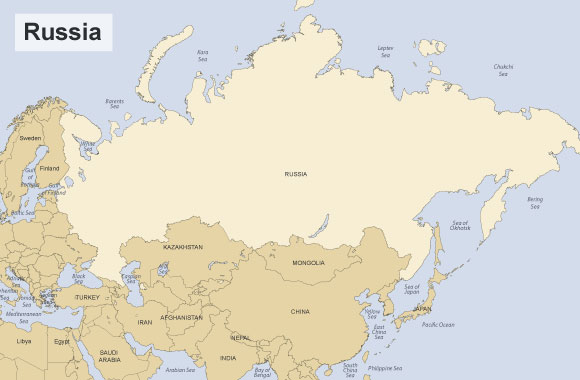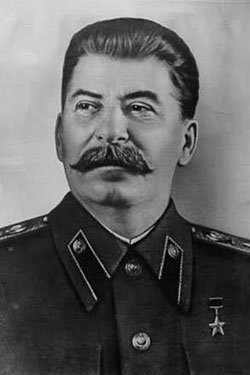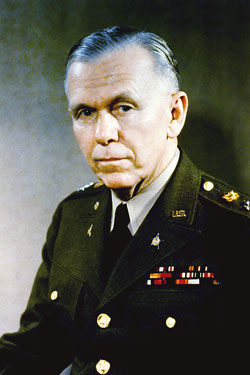The Eastern Front
The German military strategy took a fateful turn in June 1941 when Hitler ordered the invasion of the Soviet Union. Since 1924, Hitler had desired to conquer Russia. He decided to launch an attack and dissolve his alliance with Stalin after Germany suffered defeat during the Battle of Britain. Throughout 1941 and1942, German forces concentrated their efforts on conquering the Soviet Union.

Map of Russia
As millions of German soldiers poured into the Soviet Union, the Russian people fought desperately to stem the German advance. The massive German land and air campaign forced the retreating Soviet army to destroy anything and everything that might be useful to the Germans. This tactic became known as the ”scorched earth strategy” and it proved both devastating and effective.
 Joseph Stalin |  The “scorched earth strategy” in Russia. |
In an effort to assist the Soviets, the United States eventually initiated aid shipments in June, 1942. Stalin also asked Allied leaders to take pressure off the Soviet military by launching an invasion of Western Europe and opening another front against the Germans. Such a campaign was discussed between Roosevelt and Churchill while in Morocco, but was not favorably considered.
While American and British leaders discussed strategies and options in Morocco, German and Soviet forces met head-on in an intense engagement known as the Battle for Stalingrad. Stalingrad was a major city and a key industrial center in Russia. With winter quickly approaching, German forces launched an attack on the Soviets in September, 1942 that led to months of intense fighting.
However, as the battle lingered on, the Soviets were able to take advantage of the harsh winter conditions. The cold weather and the intense fighting wore down the Germans. The Russians encircled them, and eventually induced them to surrender in January, 1943. The surrender of the German troops in Russia was a major turning point in the war.

Even once the Soviets had forced the Germans to finally retreat in 1943, Stalin still pushed the Allied forces for an attack on Western Europe. The obvious leader for such a campaign would have been General George Marshall, who was the Army’s Chief of Staff. Marshall was a graduate of Virginia Military Institute and had served in France during World War I. While there, Marshall had been credited with planning several Allied victories. Unlike Roosevelt and Churchill, Marshall always supported a campaign against Western Europe. He disagreed with Churchill who advocated a focus on Africa and Italy.
Yet, despite Marshall’s accomplishments and background, Roosevelt chose General Dwight D. Eisenhower to lead the mission in Europe. His choice was a result of the high regard he had for Marshall; President Roosevelt wanted Marshall to remain in the states and to continue serving as the Army’s Chief of Staff.